The Corsair Carbide 400Q Case Review
by E. Fylladitakis on April 29, 2016 9:00 AM EST- Posted in
- Cases/Cooling/PSUs
- Corsair
- ATX
- E-ATX
- Carbide
The Exterior of the Corsair Carbide 400Q
Corsair went with a minimalistic refined design with the Carbide 400Q. The entirety of the case, both inside and outside, is satin black. It is worthwhile to mention that the external paint job is immaculate and that the paint is highly resistant to fingerprint marks. All of the case’s panels are flat and metallic, including the faceplate - the top of which is the only part of the case that is making a rounded edge. Measuring 46.4 cm tall, 21.5 cm wide and 42.5 cm deep (18.3 × 8.45 × 16.75 in), the Carbide 400Q is a rather compact midi ATX tower case like Corsair claims it is, falling between the SilverStone Fortress FT05 (7.5% larger) and the NZXT S340 (9.5% smaller). While NZXT managed to make their case nearly 10% more compact, we should note that the Carbide 400Q supports more parts and larger hardware parts, such as EATX motherboards.
11.2 oz (330ml) can inserted as size reference
The front faceplate cannot be opened, as there are no external drive bays anyway. Its frame is actually plastic, with the metallic plate being just a top cover for aesthetic purposes, and can be removed to clean the front filters and to allow access for the mounting of liquid cooling radiators. Corsair says that it can be simply pulled off, but that was not true for our sample: it required a lot of force to come off and that does not bode well for the longevity of the plastic mounting studs.
The front I/O ports and buttons are at the top panel, near the front side of the case. Starting from left to right, we can see a small reset button, an activity LED, two 3.5mm headphone jacks, two USB 3.0 ports and one large square power button.
A look at the rear of the Carbide 400Q reveals that the PSU compartment is located at the bottom, a common design feature as of late. We can also see the 120 mm fan, the position of which can be adjusted vertically by about one inch. There are no holes for cables or liquid cooling hoses.
One of the most interesting parts of the Carbide 400Q is the top panel, which features a magnetic cover with a narrow layer of sound dampening material. The case comes without any fans from the factory but, should the user wishes to trade acoustics with thermal performance, the top cover can be simply pulled off to reveal the perforated top of the case.
The Carbide 400Q stands on four rather tall plastic feet with rubber anti-slip pads at their bottoms. The feet are particularly tall for a case that has limited underside ventilation (only for the PSU). Although the feet can be removed, the 400Q is designed to function with the feet attached - the PSU intake will be blocked and the furniture will be exposed to many rigid objects that can cause damage. The PSU intake has a nylon filter that can be removed from the back of the case.


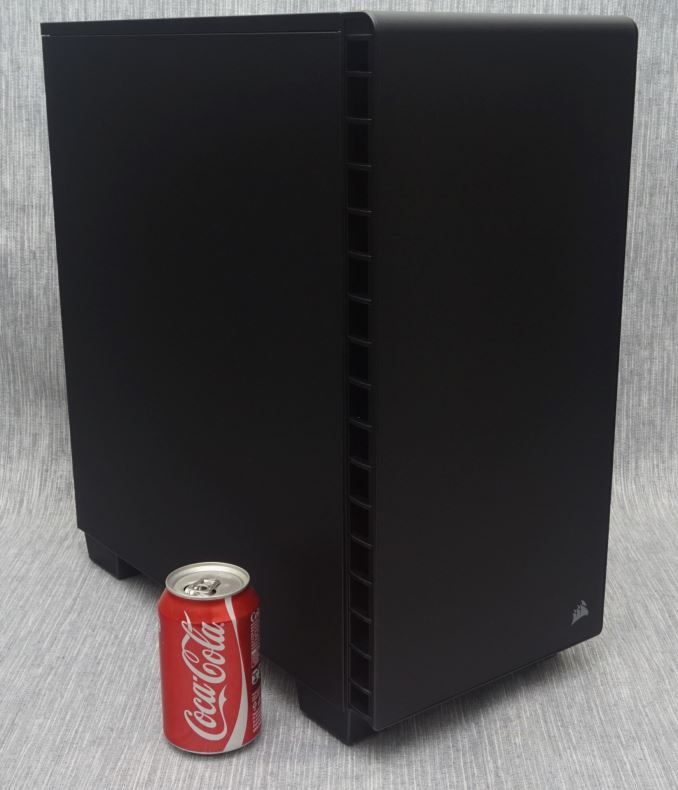
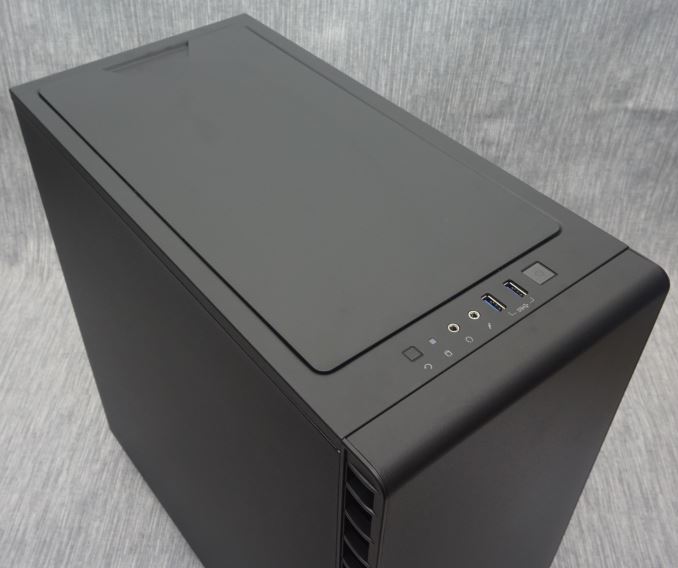
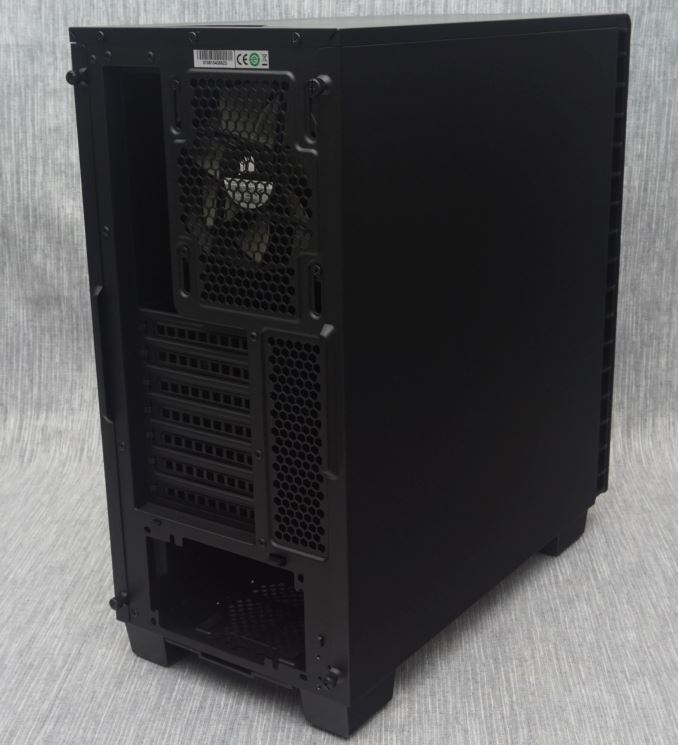
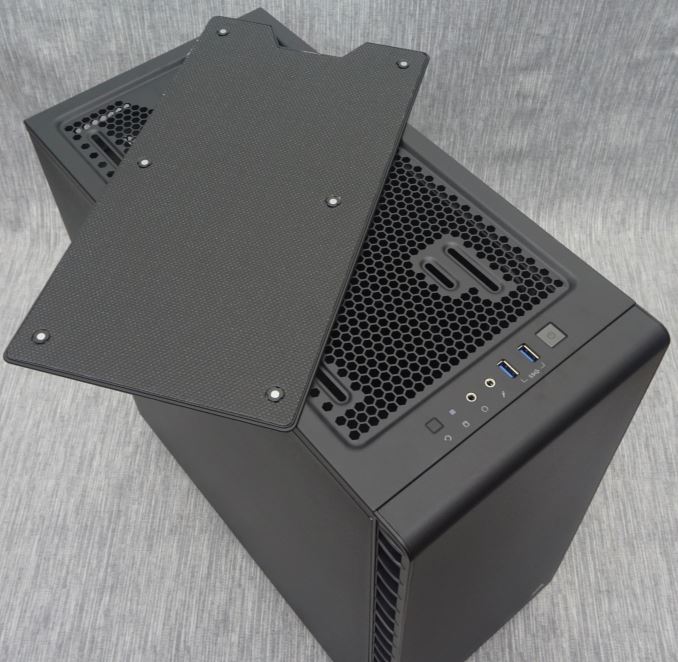
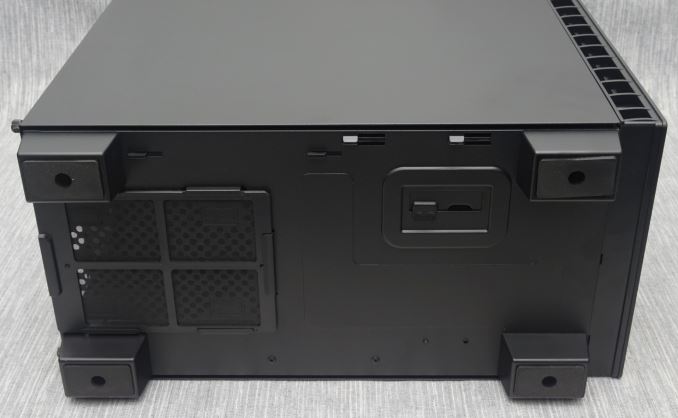








63 Comments
View All Comments
BrokenCrayons - Friday, April 29, 2016 - link
Agreed! I love the can for size comparison too. It makes me laugh a little when I see it.jardows2 - Friday, April 29, 2016 - link
I would have been better with a Dr Pepper can!Holliday75 - Friday, April 29, 2016 - link
I'd prefer to see a beer can and some surly language in the view. In vino veritas.just4U - Friday, April 29, 2016 - link
Hey E,You guys getting a review sample of Carbide Series 88R mATX?
In my opinion the 350D is probably the best matx case on the market.. it's climbed in price (at least here in canada) since launch but still very popular... and my go to case. The 88R looks very similar to it.. kinda curious to see what Anantech thinks of it.
lehtv - Friday, April 29, 2016 - link
"If it could have been a little lower it would be more competitive in a crowded market."This is not the correct way to use the second conditional. The conditional clause needs to be past tense: "If it had been...". It is sad to see a basic mistake like this in the concluding paragraph which pretty much everyone will read.a
lehtv - Friday, April 29, 2016 - link
Oh, and it's either "had been" -> "would have been", or "was" -> "would be".Murloc - Saturday, April 30, 2016 - link
what about "Had it been a little lower, it would be more competitive in a crowded market"?I'm no native speaker but this sounds less convoluted to me than if "If it had been".
SpetsnazAntiVIP - Friday, April 29, 2016 - link
@Anandtech - There are plenty of companies that will professionally edit your articles for spelling and grammar. I have a friend that does it for edanz. He could probably work something out with your site, if you are interested.zeeBomb - Friday, April 29, 2016 - link
Best cases that are reasonably cheap?Magda Merz - Saturday, April 30, 2016 - link
Thoughtful writing . I learned a lot from the insight . Does anyone know if my company could possibly find a sample IRS 5329 example to edit ?